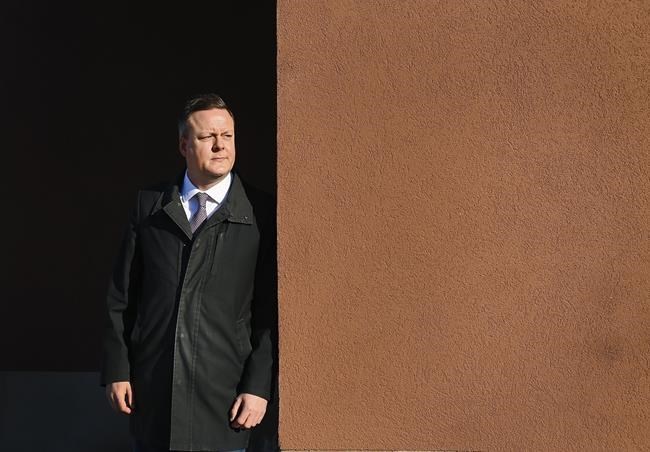TORONTO — Inspector Graham Gibson never bought into the argument that autism prevented Alek Minassian from knowing that killing unsuspecting pedestrians on a crowded sidewalk was morally wrong.
But despite the strong case he built as the lead detective in the Toronto van attack case, Gibson had nervously awaited the verdict unsure of the outcome.
"You never know which way it will go," he said with relief after a Toronto judge found Minassian guilty earlier this week on 10 counts of murder and 16 counts of attempted murder.
Throughout the investigation and especially on verdict day, Gibson said he thought about the families that lost loved ones in the attack.
"There will never be closure, but this is something that will help them," he said.
It has been long haul for Gibson since that bright, warm day on April 23, 2018.
After several delays, the Minassian trial was set to begin in April 2020, but then the pandemic hit and it became unclear when, or how, it would happen.
Court eventually decided to proceed via videoconference, and the eight-week trial began last November on Zoom.
Minassian offered investigators and forensic psychiatrist who assessed him a number of motives for his deadly rampage. He said he was infatuated with a mass murderer and the forefather of the so-called "incel" movement — males who are involuntarily celibate and hate women because they will not have sex with them.
The attack, he told police, was retribution against the world because as an "incel" he saw himself at the bottom rung of society.
He later told a psychiatrist he didn't really hate women, but then told another doctor he wanted many women to die that day.
Other motives he gave included notoriety, a strong desire to commit a mass killing, loneliness and worry about failing at a new job.
Gibson said a few of those motives rise above the others.
"You have somebody who sets out to murder people in the name of being an incel, who is a misogynist and he wanted that notoriety," he said.
Gibson was on duty when the first reports of a major incident started coming into the Toronto police operations centre around 1:30 p.m. that day three years ago.
Multiple pedestrians had been hit, apparently deliberately, by a man in a van driving along the sidewalk. Some, dispatch heard, may have been killed.
Gibson left the police headquarters and rushed to the scene on Yonge Street - one of the busiest in the city.
The crime scene stretched for 2.5 kilometres, he recalled. Eight people had died on the sidewalk or road and their bodies remained there. Two others died later in hospital.
Many others were injured. The city was in a panic.
"It was 100 per cent overwhelming," Gibson said. "It's referred to as scene shock. Your mind starts to race and you wonder, 'how am I going to get this chaos under control?'"
He had to draw upon his many years of experience investigating homicides in the city, including one of the city's worst mass shootings.
It was a hot summer night in 2012 when Gibson got the call for a shootout in the city's east end, on Danzig Street.
Two people died that night and 23 others were injured when two gangs fought at a barbecue dinner.
"That was a chaotic scene," Gibson said. "I had seen scenes like this before, not to the extent of the attack."
But on the day of the van attack, Gibson was far from alone. Toronto police sent 16 homicide detectives to the scene, a quarter of the entire squad.
Scores of officers from traffic services were there to reconstruct the attack, along with while forensic identification officers and coroners, including the province's chief coroner, Dr. Dirk Huyer.
The pressures were immense, and sometimes diametrically opposed.
"You have people who've been severely and graphically injured, and out of respect for the families and for the deceased themselves, you want to remove them from public site as quickly as you can," he said.
"It's very distressing for the community and for the public. But then you know there's certain things that you need to do to make sure that you're recording what happened appropriately for court."
Minassian admitted to planning and carrying out the attack, leaving his state of mind at the time of the attack as the only issue at trial.
"I'm very, very relieved for the families," Gibson said after the guilty verdict. "I think it's a good win for them."
This report by The Canadian Press was first published March 5, 2021.
Liam Casey, The Canadian Press



